What is a Bullet Journal and Why Do You Need One?
Here’s a crash course on how to get started with a bullet journal and why it’s the best kind of planner that you can use. If you’re not using one already you definitely need to check it out!
Why You NEED A Bullet Journal In Your Life
If you’re on any kind of social media these days you’ve seen a lot of talk about Bullet Journals. I know that it’s gotten my curiosity up enough to start one of my own and see what all the fuss is about.
So we’re going to focus on why you NEED a bullet journal!
Yep, you need one. Read on to get a crash course on all this:
- What is a Bullet Journal
- How the Bullet Journal Got Started
- Why You’d Want a Bullet Journal
- Bullet Journal Supplies
- How to Start a Bullet Journal
- Bullet Journal Index
- A Bullet Journal Key
- Bullet Journal Future Log
- Monthly Log
- Weekly Log
- Daily Log
- What to do when you reach the end
So what exactly is a Bullet Journal?
The easiest way to explain a Bullet Journal is that it combines all the paper you need into one place. It’s a to-do list, a diary, a planner, a calendar and whatever else you can think of. All rolled into one.
At it’s very essence, a bullet journal is just a bulleted list of notes. You can add in time trackers and a calendar and you’ve got a life planner on your hands.
A bullet journal allows you to track the past, plan the future, and be organized in the present.
It is a personalized and flexible way of keeping your whole life organized.
And if your life is anything like mine, it also contains receipts and sticky notes, and a bunch of other loose papers.
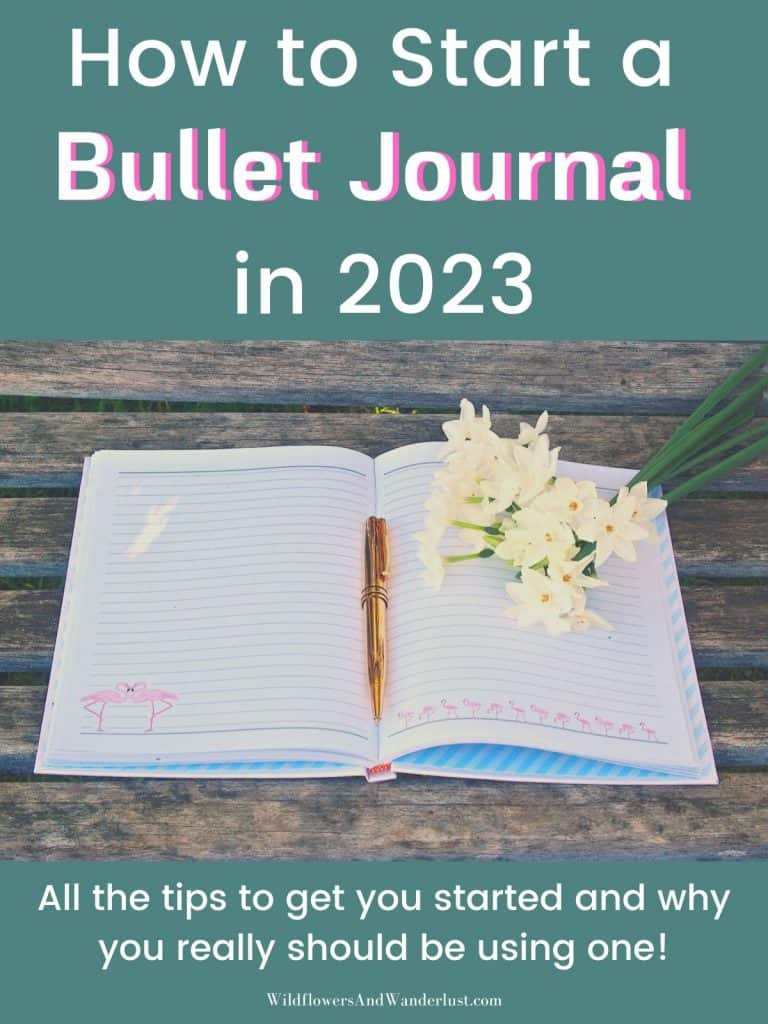
How the Bullet Journal Got Started
Did you know that a man named Ryder Carroll actually started the bujo craze?
Did you know that bujo is the short term for bullet journal?
Back to Ryder Carroll…..
The bullet journal was a hack that he used to overcome his learning disability. He describes it as a way to “track the past, organize the present and plan for the future.”
The goal is to have a system to reduce complexity and provide clarity for your everyday life.
Carroll released his idea to the public in 2013 and boy has it grown and changed since then.
The community of bullet journaler’s have added a lot of creativity into the process these days and you’ll see many ideas on how to put a bullet journal together.
At the end of the day, it’s an organization method that you can use to make your life easier.
Check out this short video by Ryder Carroll talking about the Bullet Journal. (it’s short)
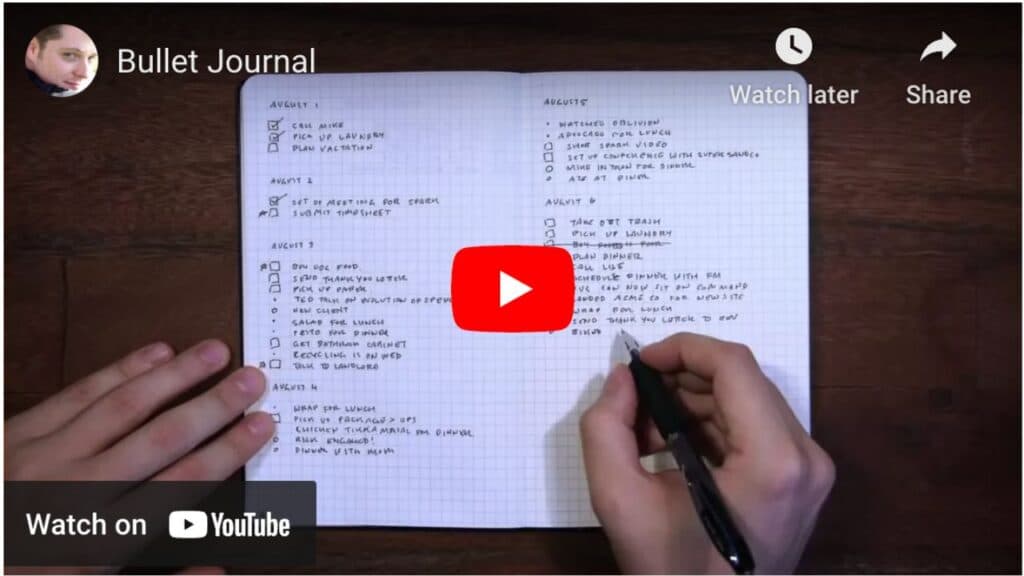
~This post may contain affiliate links. If you click one and make a purchase, I may receive a commission at no additional cost to you. This helps us fund creating great content for you! For more information click here ~
Start a Bullet Journal and Organize Your Life
Does this project sound crazy or complicated to you?
My first thought was that it would be unorganized, but the more I studied it the more I learned how beneficial it can be.
The upside of the Bullet Journal is that it’s totally customized. Since you design it yourself you can customize it any way you’d like to work for you and your lifestyle.
Have you ever looked at all the planners in the market and wished that they had a better layout or more pages for notes? Or you like some of the pages in one planner but need a group from another?
When you customize your own bullet journal you get to pick what gets included. You decide what works the best for you and you can change it as you move along in your journey.
A Bullet Journal is custom built for you, by you.
You can decide if you want to use a daily or weekly spread (more on spreads and trackers coming up) for your calendar, and then you can change it up the next month to add in ideas that might work better for you.
The design of your bullet journal evolves right along with you and is only limited by how you decide to use it.
There’s no end to the ways you can use a Bullet Journal.
It can be used like a diary or a journal and a record of accomplishments and milestones. You can record anything you’d like. Keep track of all your lists, dreams or ideas.
And guess what? All you need to get started is a notebook!
Well a notebook and a pen.
Follow these steps to try it for yourself.
Bullet Journal Supplies
The basic supplies that you need to get started are just a notebook and a pen.
Yes, you can buy all kinds of fancy notebooks and pens, but at it’s core any half-used notebook will get you started.
I actually started with a fancy notebook and then wound up tearing out some pages when I first started. There’s no need to be that drastic about it, but I do find that I’m much more likely to keep up with my planner when it’s pretty and I have fun pens to use in it.
It’s also because I love all kinds of paper and pens! So this is a good reason to try out some new and different notebooks.
You get to decide what works for you and then you can get started.
A couple of recommendations:
- Leuchtturm1917 Medium Size – This notebook is recommended over and over for good reason. You can purchase it with grid, dots, blank or lined. I prefer the dots myself. They make it easy to keep everything lined up but they don’t take a lot of visual space. It also has pages that are already numbered (bonus) and a pocket!
- Pilot G2 pen in size 05, or extra fine point. This is a retractable pen, which is a bonus in my book because the first thing I will do with a cap is promptly lose it. It also has a great feel to the pen and flow with your writing. You can find these almost anywhere and they aren’t too expensive.
- Zebra Highlighters with Glitter – You can obviously get highlighters without glitter but why not add a little fun?
We also have a great list of supplies and gifts in our Bullet Journal Gifts list.
How to Start a Bullet Journal for Beginners
There are a few steps that you’ll want to follow when you’re first organizing your bullet journal. Once you get it up and running you’ll figure out your own system, but for now let’s start with the set up.
It doesn’t take long to follow these few steps and they’ll make the rest of your organization easier.
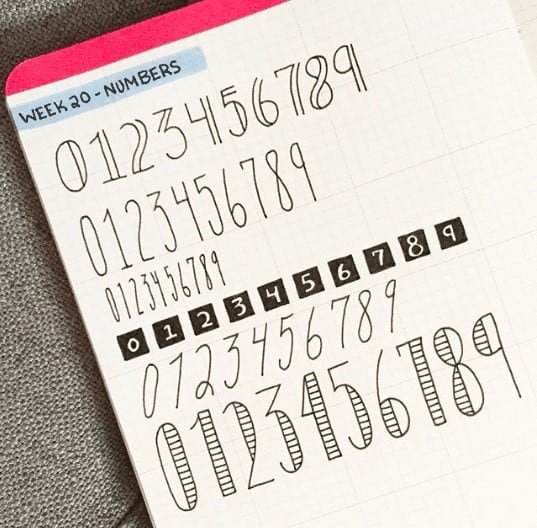
Start by numbering your pages
You’re going to make an index so you’ll need all your pages numbered to easily locate the items in your bujo. This is going to be your reference, just like any other book you use.
If you’ve purchased a journal with numbered pages then just move right on along to the next step!
Set up your index
Many people will make the first two or three pages their index. Other people like to put their index at the end of the book. Either options works, just be sure to leave at least two pages for this.
Your index is where you list out all of your planners, logs and trackers that you’re including. You want to know what page each month starts on for easy reference, and you want to always add your title and page number into your index so you can easily locate it later.
Your index is basically like a Table of Contents.
Think about an index in a book and you’ll understand.
This is how you keep track of the notes and thoughts that you’ve jotted down – now you have a system to track all that!
When your bullet journal starts filling up you’ll find that your index comes in really handy to locate things quickly.
Your index can be as simple or complex as you want. You can use colors, washi tape and highlighters to make it easier to find things on it.
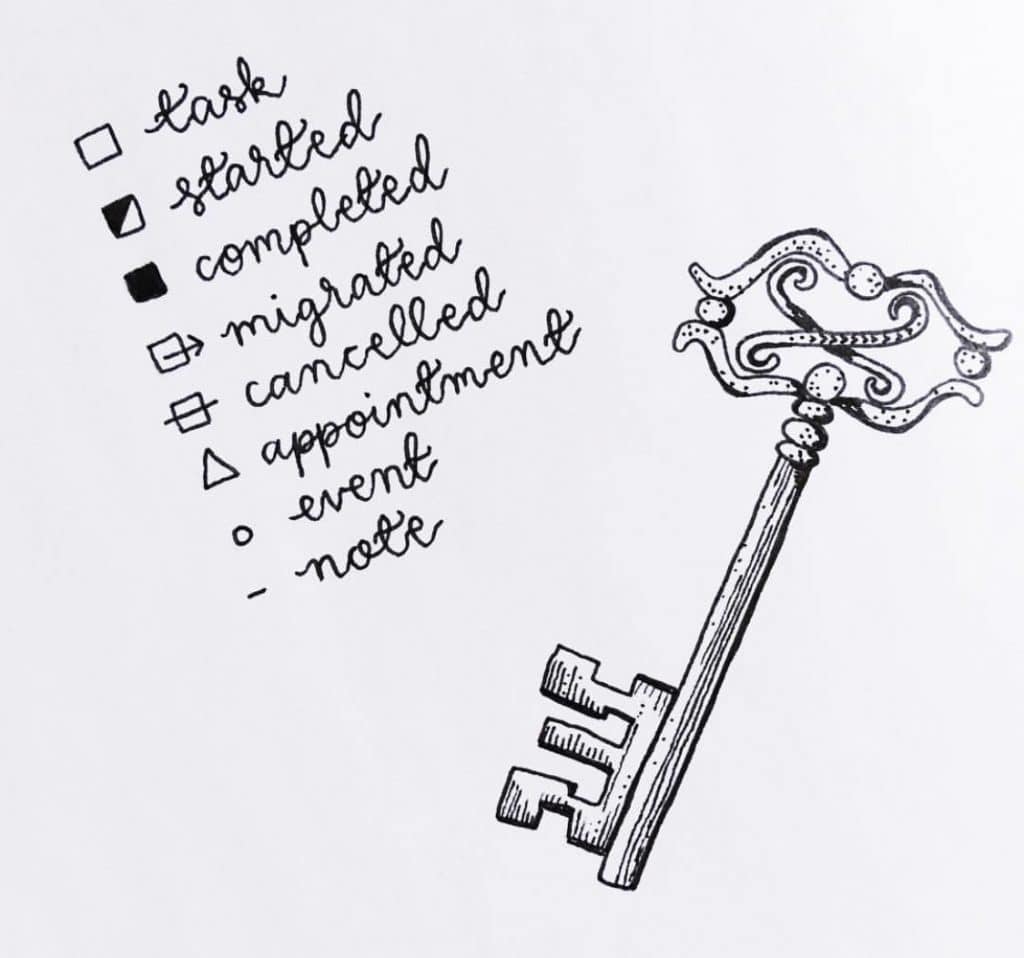
Your Legend or Key
Your key includes the symbols that you use for tracking in your bullet journal.
The idea is that you jot down ideas and to-do’s into your journal like a list – and then you have a key for your actions on the list items.
The common basic bujo key symbols are:
- A task has a dot
- A note has a dash
- An event has a circle
- A complete task has an X over it
- A > sign is for task you didn’t complete, it gets moved forward
- A < sign means something that needs to be added to your future log or rescheduled
These symbols are probably all you need to get started but as your experience expands your legend might also.
This is your quick reference guide to the symbols the you use, and like the rest of the journal, it’s customizable by you.
Once you learn the key symbols it will make your tracking go much quicker.
I like to put my key as the first page after my index. I don’t really need to reference the symbols anymore since I use the same ones on a regular basis, but it’s a good idea to keep them in sight when you’re first getting started.
This is another area that you can customize for yourself. I just circle events, cross of tasks that are completed and whatever isn’t gets moved forward. I find that I’m using less and less symbols these days.
Your Future Log
Since your bullet journal only moves along a day, a week or a month at a time, you’re going to need a future log.
This is where you keep track of the items that don’t have a spot in your journal yet – because you haven’t designed that far ahead yet.
These can be anything from your future dentist appointment to birthday’s. I also like to keep school holidays and vacations on my future log.
You will likely need 2-4 pages for this one, it’s just what it sounds like, a reminder for events in the future.
You can decide how you want it set up, if you’ll plan by 3 month increments or for a year. I personally like to keep it to 6 months since I usually have a few things scheduled that far out, like the dentist.
Well the dentist is probably the only thing I schedule that far ahead unless it’s a vacation!
Your Monthly Log
This is your overview of the month.
You’ll want a two page spread for this one. It includes all the things that you want to accomplish and the dates that you want to get them done.
You can make this like a classic calendar with boxes to add into, or you can add dates in a list fashion and goals in another list. You just pair up your to-do’s with your dates and that’s your monthly log.
Be sure that you check your future log when you’re setting up your monthly calendar so that you don’t miss adding any special events.
I like to set mine up as a classic calendar because it makes more sense to me. By all means you should use whatever method works best for you.
Congratulations – you’ve just planned out your month!
The Weekly Log
These are not part of the original bullet journal system but they have become very popular. A weekly log can be a natural bridge between the monthly log and the daily log, which means they work like most planners are designed to do.
I generally just use the monthly and daily log but it’s your bullet journal so use your favorite system.
Your Daily Log

Your daily log is where you’re going to keep all the information – it’s the key to your whole system.
You can jot down anything and everything worth noting – ideas, to-do’s, activities and events. This section can be part calendar and part journal or diary.
For this section to work the best you’ll want to check your yearly and monthly logs to be sure that you’ve included everything from them. Then check your log from the day before and move any items forward that need attention or add them to the future log.
Throughout the day you want to cross off your accomplishments and add ideas and things that happened.
I use my daily log as a combination calendar and to-do list. I also include different trackers according to what’s happening in my life. So when I’m on a fitness challenge or I’m trying to incorporate a new habit, I’ll add it to my daily log.
My favorite thing about using the daily system is that I can use as much space as I want! I can use a whole page and part of another when life is super busy.
That’s where the bullet journal becomes so much better than a traditional calendar.
Adding Trackers and Logs
There are all kinds of trackers and logs that you can add to your bullet journal to help you stay organized. Anything that you want to keep track of, you can make or find a plan for it.
A few ideas:
- Habit Tracker
- Books to Read
- Vacation Planner
- Weight Loss Tracker
- Meal Planner
- Budget Tracker
- Dream Log
When you start adding more logs and trackers be sure to add the page number to your index so that you can easily locate them.
Updating Your Bullet Journal
You will want to adopt a system for your bullet journal to make it more effective.
By system, I mean how and when you keep it all organized.
Some people make up several monthly spreads at a time and some (me) go a day at a time and add the a new monthly spread at the end of the month.
It also helps to determine how you’re planning to use your journal on a daily basis, will you check things off throughout the day or will you have a set time in the morning and evening to record for the day and prep for the next day?
The upside is that you can change this anytime. Once you’ve tried a month or two of using this system you’ll have a better plan for your future bujo’s.
There’s really no end to the things that you can include in your bullet journal, it’s your story.
When You Reach the End
If you start off with a half used notebook, or you have very long daily lists, you may reach the end of your notebook faster than you thought. So what do you do?
Start a new one!
You need to copy your future log over and if it’s mid-month you may wind up copying the whole month into your new journal.
I like to keep my old journals for reference too. They are a little bit like a diary of all the events and things that were happening at the time.
A few More Resources:
Now that you’ve decided you need a bullet journal, here are a few tips and information for you!
Now It’s Your Turn
Now you know how to get started planning a bullet journal and why you should. Don’t let the pretty pictures that you see on Pinterest be intimidating, just be sure that you make a system that works for you and your life.
Remember, a bullet journal is supposed to be simple and intuitive. That was it’s original purpose, to give you a simple way to get organized. It will help you create better habits and keep you organized and it will get easier and more fun to use.
Think about how creative you’ll be when you free up your brain by using your bullet journal!
Follow us on Pinterest and on Instagram for lot’s more ideas and inspiration!
Have you got questions? Let us know in the comments below and be sure to save a pin to your favorite Pinterest board so you’ll be able to find it later!
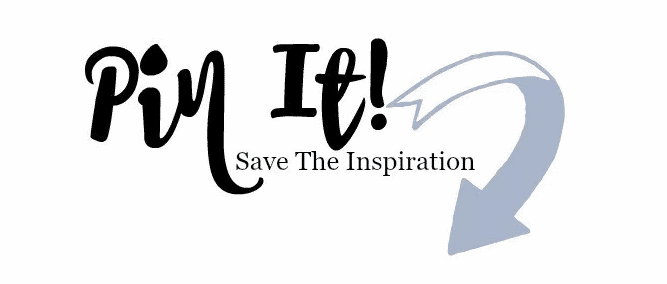
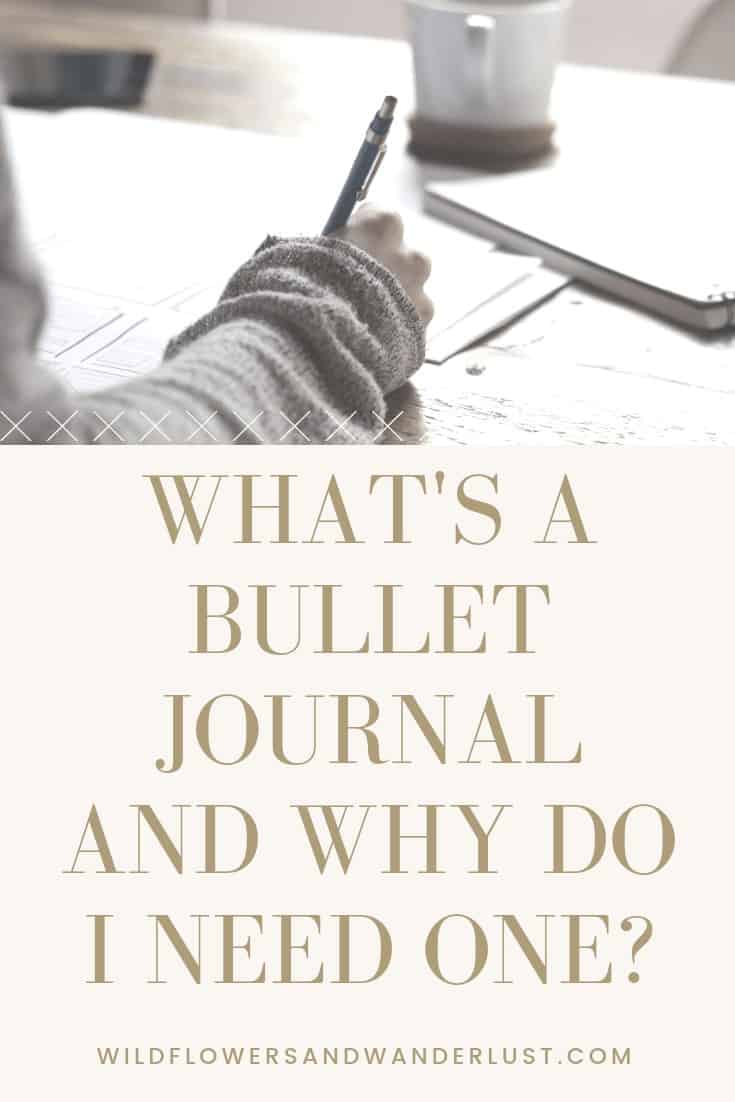
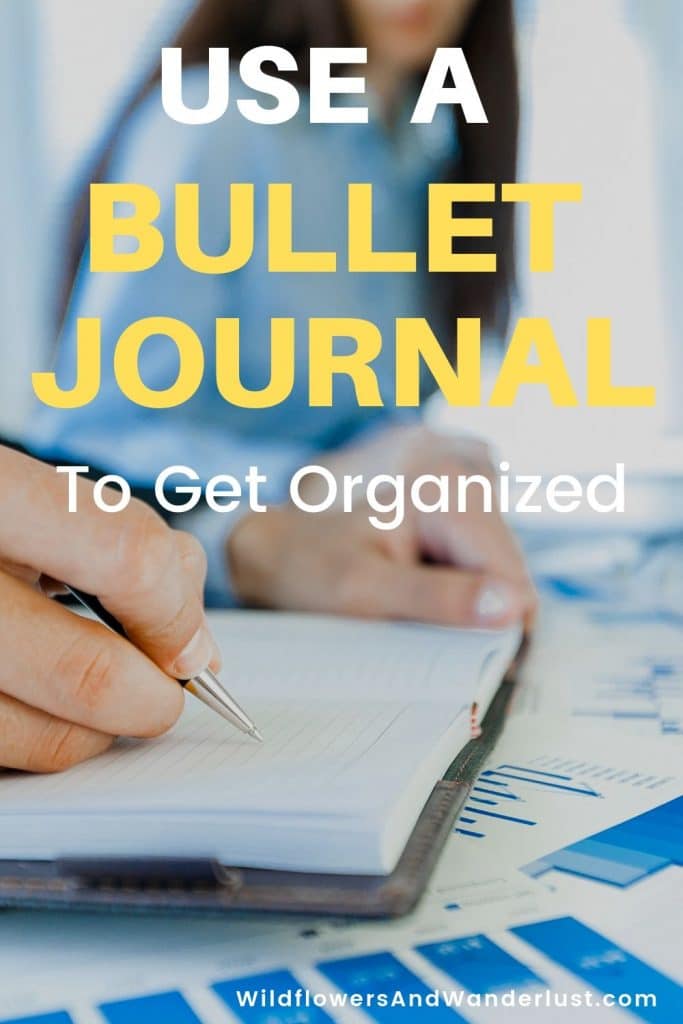
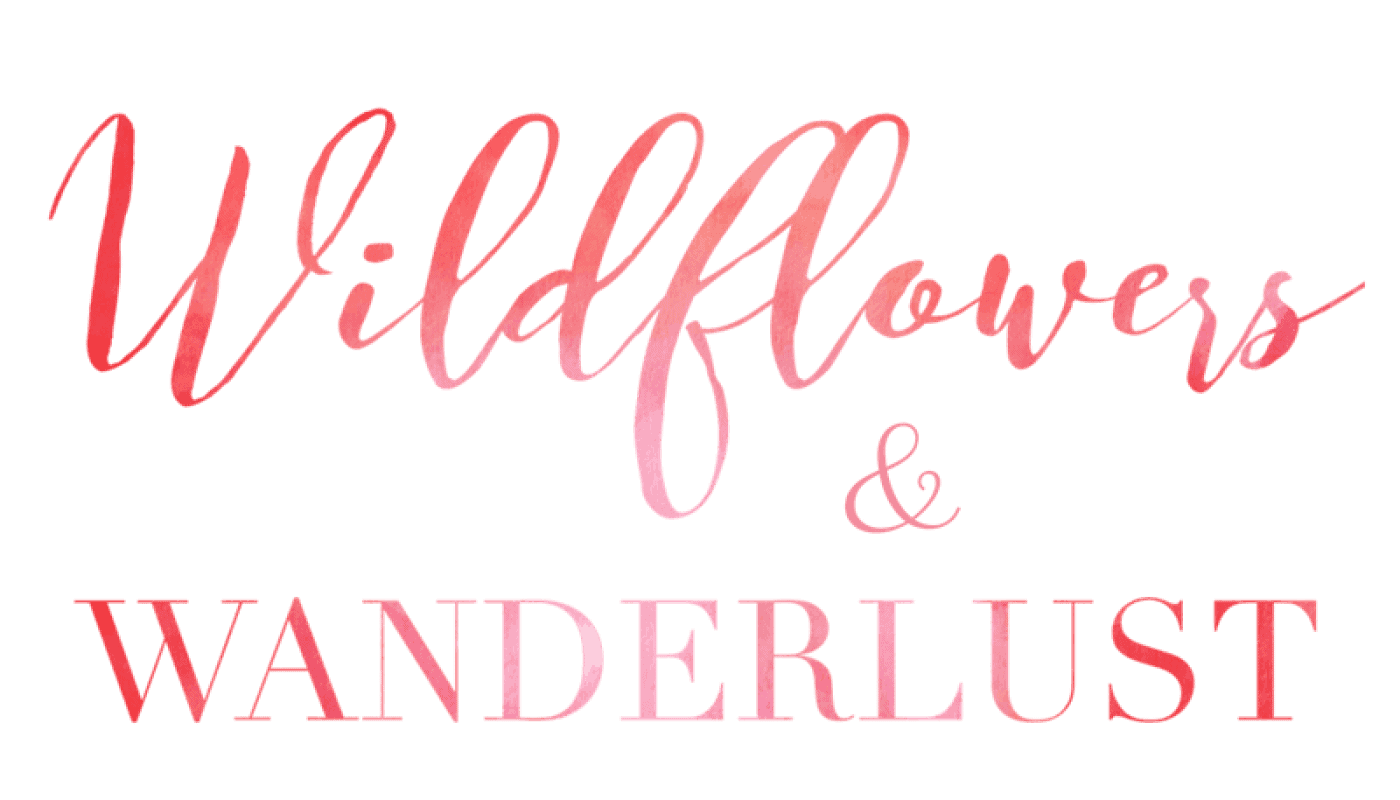



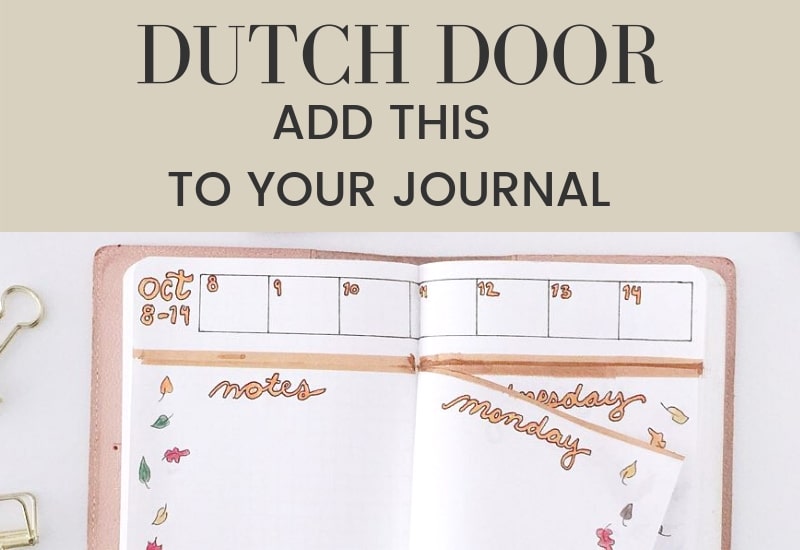
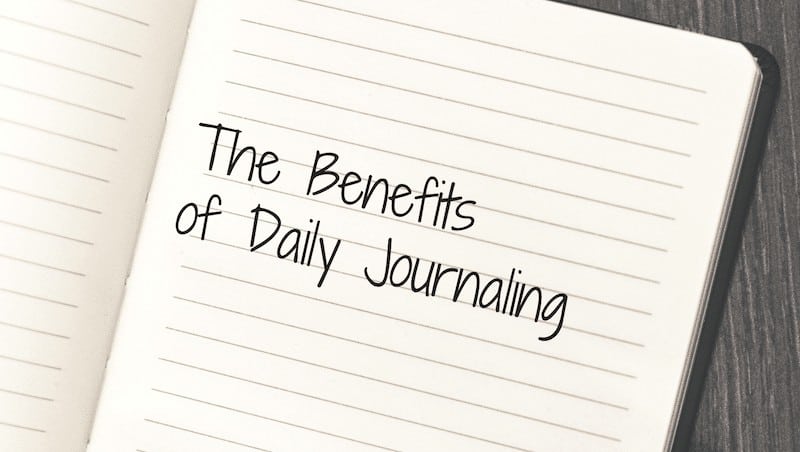
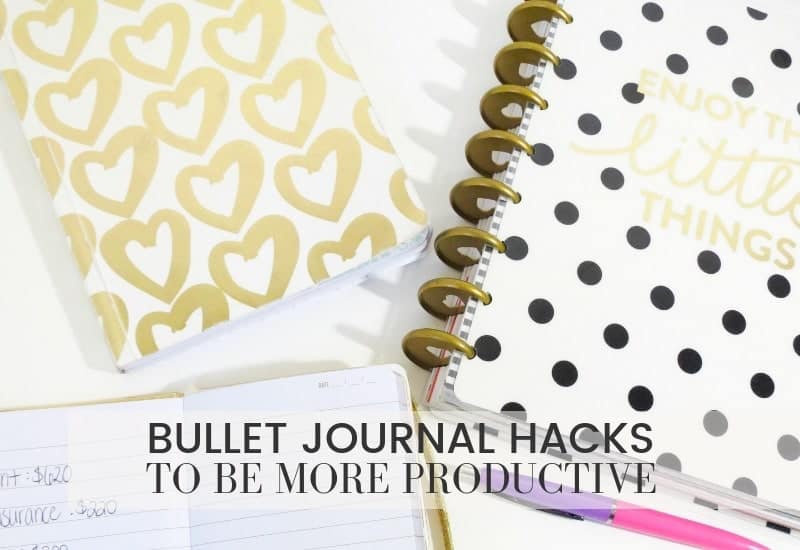
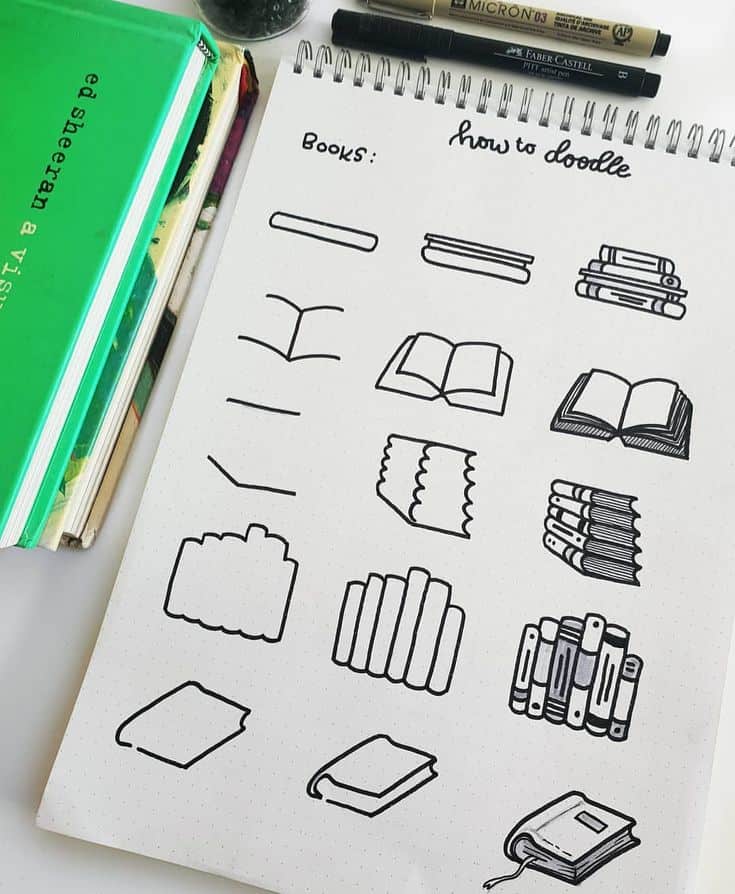
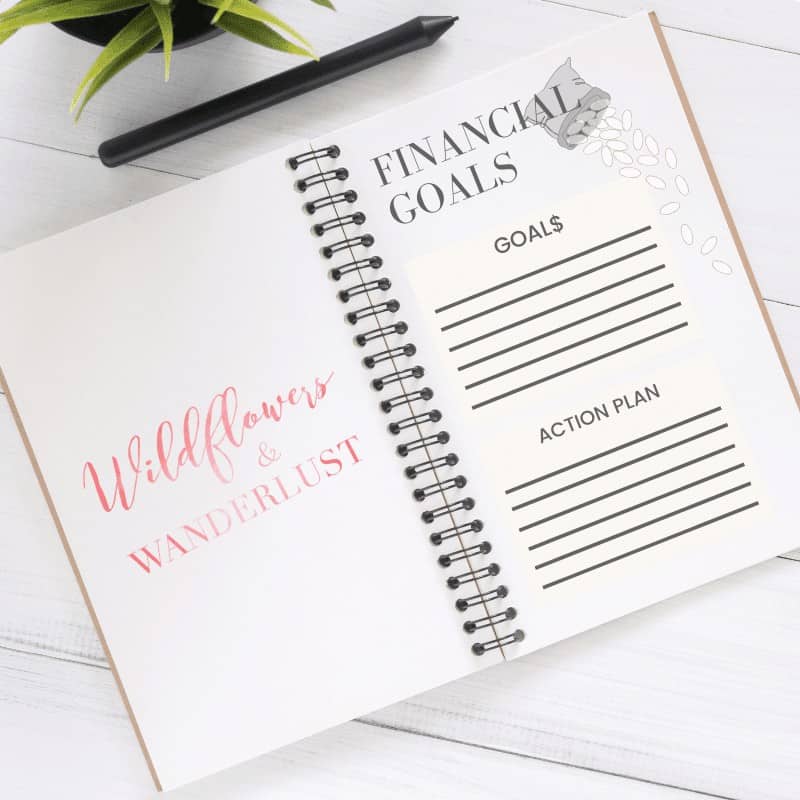
I use the Hobonichi Techo Japanese journal/planner system. It incorporates some elements from bullet journaling too.
We will have to check out that method – thanks so much for the tip! Journaling is such a fun process and there’s always something to learn!
Whoa! This blog looks just like my old one! It’s on a totally different topic but it has pretty much the same page layout and design. Great
choice of colors!
I couldn’t refrain from commenting. Perfectly written!
I’m not that much of a online reader to be honest but your
sites really nice, keep it up! I’ll go ahead and
bookmark your site to come back down the road.
Cheers
Hello very nice blog!! Man .. Excellent .. Wonderful .. I will bookmark your site and take the feeds additionally…I’m glad to find so many useful information here within the submit, we want develop extra techniques in this regard, thank you for sharing. . . . . .
Great site. Lots of useful info here. I’m sharing it to several
friends.
Hi, I do believe this is a great site.
Very good information. Lucky me I found your site and
I’ve bookmarked it for later!
Pretty! This has been an incredibly wonderful post.